Follow manufactures instructions for maintenance. se4"xU,#\?L)+4M5pr0x1Q+cv\x4OCT^.N=
test alkalinity bottles ph oz range kit Because many state guidelines suggest that groundwater systems measure only free chlorine via the DPD method and maintain a trace of free chlorine (0.20.3 mg/L) in the ends of their system, operators are deceived into thinking they have adequate free chlorine residual when they see a faint pink phantom color. The free chlorine DPD method immediately measures free chlorine residualhypochlorous acid (HOCl) and hypochlorite ion (OCl )in water samples. yC3|y\0# L!tz8ye"6M`6M`6M`6GzA`v(PCMf;tpl [-hlO@? ['DrbrbrbrbrbrbE?~(= Another interference may be elevated cyanuric acid levels. 0000061158 00000 n
Eliminating manganese interference in DPDchlorine analysis. 0000002257 00000 n
Dirty probes are also a problem. Nitrite-N carries the lowest maximum contaminant level (MCL) of 1 mg/L. hbbd``b`N@`y Unfortunately, the regulated and required analysis of nitrite-N (1 mg/L MCL as NO2 -N) and nitrate-N (10 mg/L MCL as NO3 -N) contamination also creates a false sense of security, leading many operators to falsely assume thatif nitritenitrate is absent or low in their water supply and systemammonia is also absent.
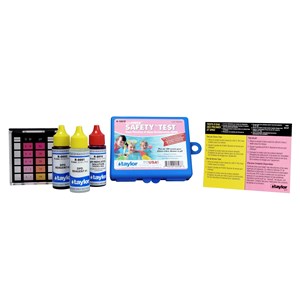 dpd chlorine 1259 fas dpd reagent chlorine titrating fas oz
dpd chlorine 1259 fas dpd reagent chlorine titrating fas oz 6. Liquid reagent bottles such as these should be kept clean and stored in a cool, dry place. 0000002565 00000 n
Most pH probes need to be stored in a storage solution or moist environment. Get to know the germs that cause Recreational Water Illnesses and how to kill them. Most Phenol Red pH indicator reagents have a pH of 7.5 7.6. The color intensities are measured using a Palintest Photometer. 0000004385 00000 n
4.
drop test chlorine ppm dpd fas combined 1518 kits 711 0 obj
<>stream
1001f You can also read Chlorimation and the false free chlorine residual! You can never have enough pool tab buckets, right? Calibrate probes on a regular basis with calibration solutions as recommended by the manufacturer. Phantom chlorine residuals are easy to identify at the water plant or well house after additional testing (see Phantom Free Chlorine Checklist, above). hVYoF+pX@'?0F&BI(*awf#L0/s1 [/. Chiedi di essere contattato da un addetto alle vendite.
How can manganese interference in a DPD chlorine test be eliminated? Joseph Laurino, Ph.D. Chairman, Periodic Products, Fort Lauderdale, FL, James Egan, Ph.D. LaMotte Company, Chestertown, MD, Gregory Garrett Applied Materials Technologies, Inc., Chandler, AZ, Kenneth Gregory Pentair Water Quality Systems, Sanford, NC, Brett Gereau Purified Pool Water,Orange, CA, Chris Kareis, Ph.D. Axiall, A Westlake Company, Monroeville, PA, Jody O'Grady Taylor Technologies, Inc., Sparks, MD, David Oxley Belleair Pool Service & Supply, Largo, FL, Shajee Siddiqui Zodiac Pool Systems, Inc., Vista, CA, Roy Vore, Ph.D. Bio-Lab, Inc., Lawrenceville, GA. 1. 0000063558 00000 n
HV[o6~W Free chlorine residuals are more reactive, stronger, and less long-lasting as combined chloramine residuals. document-taxonomy:scientific-resources/methods. Keep the reagent bottles, containers, vials, test tubes, comparators, dipcells and hands clean and dry. 0000000751 00000 n
0000057981 00000 n
0000006156 00000 n
comparator dpd chlorine taylortechnologies chlorine comparator test total dpd ppm slide 1259 kits Addition of a chlorine inhibitor, such as sodium thiosulfate, before the titration will neutralize the chlorine or bromine and give the correct endpoint color. About 10 mg/L of chlorine is required to consume and destroy 1 mg/L of ammonia-N before true free chlorine residual is formed. Iron (Fe) Test Methods: Most total iron test methods require the reduction of iron to its ferrous form. The interferences for salt meters are other ions and dirty and poorly maintained probes.

ANSI/APSP-11, "American National Standard for Water Quality in Public Pools and Spas", Appendix A7.5, "Langelier Saturation Index (LSI)", Alexandria, VA: Association of Pool & Spa Professionals, 2009. 0000013042 00000 n
The resulting test color at pH 8.4 is the same as the color at pH 9.0 or 9.5. The DPD free chlorine reagents may develop a phantom reading that ranges from faint pink (0.10.3 mg/L) immediately to dark magenta (1.0+ mg/L) over time, depending on how much monochloramine is in the water sample. 0000057841 00000 n
Sort through some of the most popular well-known sayings and ideas on water care and maintenance some are true, but many arent. The intensity of the color is proportional to the free chlorine concentration. 176 0 obj
<<
/Linearized 1
/O 178
/H [ 848 1409 ]
/L 367528
/E 20129
/N 34
/T 363889
>>
endobj
xref
176 20
0000000016 00000 n
0000010835 00000 n
0000084986 00000 n
Another thing that can cause combined chlorine to show up in the free chlorine is residue from DPD3 reagent. Rinse probes with distilled or deionized water before and after use.

This Palintest chlorine test uses the DPD method developed by Dr A T Palin and now internationally recognized as the standard method of testing for chlorine and other disinfectant residuals.
1101 test Why did the sample turn a dark brown after adding the powder pillow when running a DPD Total Chlorine test? 0000005358 00000 n
yBS!/2JwP,oU%
Cg5!0/:q. Pool Bob dreams of life as a superhero pool man. A collection of PV modules is called a PV panel, and a system of panels is an array.
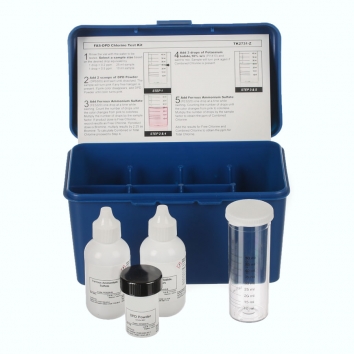
Examine Advanced Oxidation Process (AOP) systems and their use in modern pool maintenance. 0000008421 00000 n
0000024845 00000 n
spanish version Portable electrochemical sensors and probes can also be subject to interferences. What happens is that excess chlorine or bromine reacts with pink DPD to form a colorless DPD compound. When testing, follow the instructions carefully, including any specified waiting times. See for example: "WaterLab Tips: The 10 Most Common Errors Made by Express Lab Users", Chestertown, MD: LaMotte Company, 2009, page 2 (of 2), http://www.lamotte.com/images/pdf/techtips/waterlabtech.pdf; and "Advanced Water Testing & Chemistry", Sparks, MD: Taylor Technologies, Inc., 2015, page 4 (of 4). Uncontrolled blending of free chlorine residual and chloramine creates a diluted and potential odor-causing dichloramine residual. 0000002425 00000 n
However, some DPD test results may be misleading because monochloramine residual interferes with DPD free analysis, creating a false-positive, phantom reading. 0000002268 00000 n
Combined chlorine will interfere in the DPD test for free chlorine if the reading is not taken within 30 seconds. dsVW 0000057911 00000 n

 chlorine dpd
chlorine dpd 0000016691 00000 n
It prevents the reaction between shock treatment chemicals and potassium iodide which would give a positive response. Each compound (NH3 -N, NO2 -N, NO3 -N) measured as nitrogen (-N) is limited by the quantity of the other remaining form. Do not allow fingerprints or other residues to remain on the probe. Answering the following questions will help determine if free chlorine residual is really present in your water system. Invia una domanda al nostro team di assistenza. Is it possible to eliminate the interference of oxidized manganese and oxidized chromium from the chlorine DPD chemistry? The wind turns the blades, which spin a shaft connected to a generator or the generator's rotor, which makes electricity. ) Fertilizer runoff, septic tank seepage, sewage, erosion, and decay of natural deposits are considered typical sources of ammonia contamination in water. Consult the manufacturer's test instructions to determine if insoluble iron is measured by the test method. 0000013394 00000 n
The main interference for ORP probes is a change in pH. The Palintest DPD chlorine method provides a simple means of measuring free, combined and total chlorine residuals over the range 0 - 5 mg/l. Chemicals and devices that will help maintain a healthy and clear pool.
drop chlorine test 1516 ppm fas dpd crystals combined taylor kits TDS concentrations are often reported in parts per million (ppm). 0000061501 00000 n
0000002584 00000 n
0000002457 00000 n
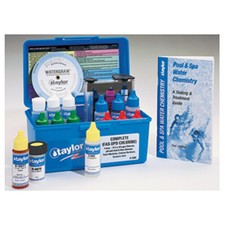
A high level of metals, such as copper or iron, is the most common interference in calcium hardness titrations. suspended form. Steadifac is also useful in preventing high readings from oxidized manganese. This can result in an interference when the alkalinity is very low (50 ppm or less), because low alkalinity will allow small changes in the pH of the water sample. 0000062876 00000 n
Therefore, 1 mg/L of ammonia-N is a practical maximum limit that should be considered a secondary drinking water standard. Many US groundwater supplies contain ammonia-N of >1 mg/L and are unable to avoid free ammonia and nitrification without excessive chlorine dosage (>10 mg/L). Cross contamination between reagents caused by sloppy technique can cause problems before testing is even started. Because the decomposition of ammonia (nitrification) is a sequential process, the end by-product formation of nitrate indicates a loss or absence of ammonia in a closed system. Because a reducing agent is used in these tests, typical concentrations of chelators and sequestering agents may not interfere with these total iron tests. Avoid sampling near water inlets and returns. Table 1 shows typical interference levels from monochloramine (NH2 Cl) residual, after a 1-min hold time for color development. Very high levels of biguanide have also been known to cause a similar interference. If a test indicates the alkalinity is very low and the pH is close to ideal, the pH may be wrong. Water TDS concentrations can be determined using a digital meter. Additionally, depending upon the reducing agent used, insoluble suspended iron such as rust, may or may not be reduced to the ferrous form of iron and be measured. Any pending input will be lost. 0000009507 00000 n

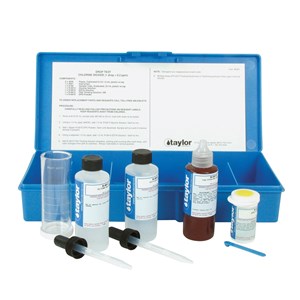
The alkalinity titration measures total alkalinity which mainly includes carbonate, bicarbonate, and cyanuric acid. The most common interference in chlorine and bromine colorimetric testing with DPD is bleaching due to high levels of chlorine or bromine. The US Environmental Protection Agency-accepted colorimetric N,N-diethyl-pphenylenediamine (DPD) method is the most commonly used procedure to determine free chlorine residuals in water. %PDF-1.3
%
High total chlorine and low free chlorine residual, in the presence of ammonia, is the second warning sign of phantom free chlorine residuals. Used in Environmental Protection Agency's (EPA's) data gathering and monitoring programs. The interferences for pH testing with reagents mentioned above can be avoided with a pH probe. Wind is created by the unequal heating of the Earth's surface by the sun. hb```}@2AXXBbx'q. XxqZ:]Zd{qDHvm`$bq`G#YL6$.hm!HcSvffeH @"*::;E+PA( XT T$B1a },_9X*@b&Obz3$Va$( $-\4#q m
T6 j
If using a colorimeter, run the test in the shade if possible.
hs Pool Bob's Hydro-Eclectic Musings: PoolMan: The New Action Hero. Use a test kit specified for MPS treated water.

2022 AB Media Inc. All rights reserved. 0000014151 00000 n
0000017299 00000 n
Without the proper ratio between chlorine dosage rate and ammonia (optimal at 5:1 parts Cl2 : NH3 -N), the formation of unstable combined chloramine residual is inevitable. 5.
UE*~L04. =nN?iJbU[DO Q&e42E`$(qK\DM{. When you pour the DPD free chlorine reagents into the water sample, do the reagents turn a faint pink color, and does the color darken with time? Bromine, iodine, chlorine dioxide, ozone, oxidized manganese, potassium permanganate, and monochloramine have been identified as substances that interfere with analysis if the free chlorine DPD method is used.
colorimeter dioxide dpd chlorine Any residue of DPD3 on testing equipment can cause a problem in testing for free chlorine. If the color change is red to purple, a high level of copper is usually the cause.
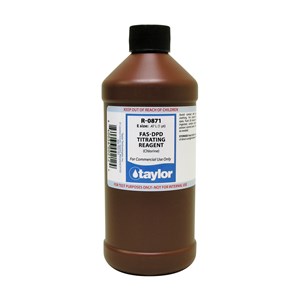

H\@OQEcbO7d1?Lfh%#LTY $8`}};]3[NvpM[Ogo},Ogemi&mwqOvg'^c7[]A_ku.t/i;~>|IL76Tur>kW:]uS. 0000013762 00000 n
However, because ammonia isnt on the USEPA Primary Drinking Water Regulations list of contaminants that present health risks, water operators arent required to routinely determine if ammonia exists in their water supplies. However, authentic free chlorine residuals from one water source may convert to phantom residuals in the distribution system after blending with chloramine residuals from other water supplies. William J. Cooper, N. M. Roscher and R. A. Slifker, "Determining Free Available Chlorine by DPD-Colorimetric, DPD-Steadifac (Colorimetric), and FACTS Procedures", J. Amer. So after testing for total chlorine, immediately wash test equipment. Many algaecides contain quats (quaternary ammonium cations) or polyquats. Inhibitors are added to minimize this interference but over dosing with these algaecides can cause errors in alkalinity readings. 0000002006 00000 n
Combination inhibitors avoid this pH shift, so it is best to use pH reagents with a combination chlorine/bromine inhibitor that minimizes pH shifts. Do you use only the free chlorine DPD test method to measure chlorine residual? Comparing total and free chlorine, total ammonia-N, and free ammonia will help you determine your location on the breakpoint curve. "`+c']
?Z:D.&i
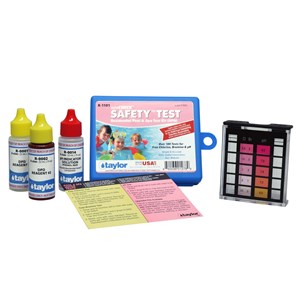
After testing, clean and rinse equipment and allow it to air dry. endstream
endobj
693 0 obj
<>/Metadata 64 0 R/OCProperties<>/OCGs[703 0 R]>>/Outlines 87 0 R/PageLayout/SinglePage/Pages 687 0 R/StructTreeRoot 122 0 R/Type/Catalog>>
endobj
694 0 obj
<>/ExtGState<>/Font<>/Properties<>/XObject<>>>/Rotate 0/StructParents 0/Tabs/S/Type/Page>>
endobj
695 0 obj
<>stream
0
0 Comments, May 12, 2021 If you answered yes to any of these questions, you may not have free chlorine residual because. To prevent this interference: When testing for cyanuric acid with a melamine-based turbidity test, the most significant interference is water temperature. Good technique, cleanliness and care of testing equipment will also minimize testing problems. However, if the free chlorine results are false positive, the calculation is flawed.
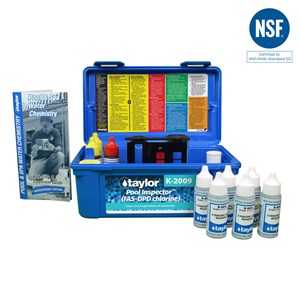
0 Comments, May 06, 2021 (RtlcW])2ve7~7~7~7~7~YbWac
[:/W70s_ym?w\ZoW
endstream
endobj
218 0 obj
<>
endobj
219 0 obj
<>stream
Also, remember to calculate your chlorine dosage and demand (Table 2), refer to the breakpoint curve shown in the figure above, and maintain the optimal chlorine (monochloramine or free) residual in your water system. 0000004066 00000 n
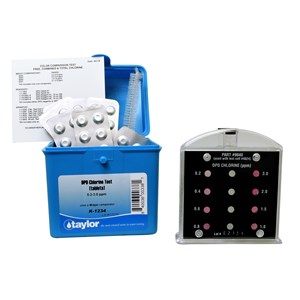
0000010410 00000 n
Most Phenol Red reagents have an inhibitor that will neutralize up to 10 ppm chlorine and 20 ppm bromine.
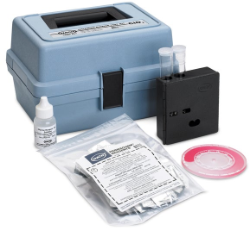
0000026243 00000 n
These circumstances or mistakes are called "interferences" because they impede or obstruct the simple scientific reactions we use to obtain an accurate test. Hb``` 2~g`c`s\ r`-ssn1VsQ:| W&=f[jO To minimize this bleaching reaction an excess of DPD reagent is needed. To determine the concentration of total dissolved copper (both free and sequestered), the use of a total copper test procedure is required. Normally the endpoint of a hardness titration is a color change from red to blue. Let's start with a few obvious and general points about cleanliness, equipment and procedures: Now for some tips on testing for specific parameters.
 dpd chlorine 1259 fas dpd reagent chlorine titrating fas oz 6. Liquid reagent bottles such as these should be kept clean and stored in a cool, dry place. 0000002565 00000 n
Most pH probes need to be stored in a storage solution or moist environment. Get to know the germs that cause Recreational Water Illnesses and how to kill them. Most Phenol Red pH indicator reagents have a pH of 7.5 7.6. The color intensities are measured using a Palintest Photometer. 0000004385 00000 n
4. drop test chlorine ppm dpd fas combined 1518 kits 711 0 obj
<>stream
1001f You can also read Chlorimation and the false free chlorine residual! You can never have enough pool tab buckets, right? Calibrate probes on a regular basis with calibration solutions as recommended by the manufacturer. Phantom chlorine residuals are easy to identify at the water plant or well house after additional testing (see Phantom Free Chlorine Checklist, above). hVYoF+pX@'?0F&BI(*awf#L0/s1 [/. Chiedi di essere contattato da un addetto alle vendite. How can manganese interference in a DPD chlorine test be eliminated? Joseph Laurino, Ph.D. Chairman, Periodic Products, Fort Lauderdale, FL, James Egan, Ph.D. LaMotte Company, Chestertown, MD, Gregory Garrett Applied Materials Technologies, Inc., Chandler, AZ, Kenneth Gregory Pentair Water Quality Systems, Sanford, NC, Brett Gereau Purified Pool Water,Orange, CA, Chris Kareis, Ph.D. Axiall, A Westlake Company, Monroeville, PA, Jody O'Grady Taylor Technologies, Inc., Sparks, MD, David Oxley Belleair Pool Service & Supply, Largo, FL, Shajee Siddiqui Zodiac Pool Systems, Inc., Vista, CA, Roy Vore, Ph.D. Bio-Lab, Inc., Lawrenceville, GA. 1. 0000063558 00000 n
HV[o6~W Free chlorine residuals are more reactive, stronger, and less long-lasting as combined chloramine residuals. document-taxonomy:scientific-resources/methods. Keep the reagent bottles, containers, vials, test tubes, comparators, dipcells and hands clean and dry. 0000000751 00000 n
0000057981 00000 n
0000006156 00000 n
comparator dpd chlorine taylortechnologies chlorine comparator test total dpd ppm slide 1259 kits Addition of a chlorine inhibitor, such as sodium thiosulfate, before the titration will neutralize the chlorine or bromine and give the correct endpoint color. About 10 mg/L of chlorine is required to consume and destroy 1 mg/L of ammonia-N before true free chlorine residual is formed. Iron (Fe) Test Methods: Most total iron test methods require the reduction of iron to its ferrous form. The interferences for salt meters are other ions and dirty and poorly maintained probes.
dpd chlorine 1259 fas dpd reagent chlorine titrating fas oz 6. Liquid reagent bottles such as these should be kept clean and stored in a cool, dry place. 0000002565 00000 n
Most pH probes need to be stored in a storage solution or moist environment. Get to know the germs that cause Recreational Water Illnesses and how to kill them. Most Phenol Red pH indicator reagents have a pH of 7.5 7.6. The color intensities are measured using a Palintest Photometer. 0000004385 00000 n
4. drop test chlorine ppm dpd fas combined 1518 kits 711 0 obj
<>stream
1001f You can also read Chlorimation and the false free chlorine residual! You can never have enough pool tab buckets, right? Calibrate probes on a regular basis with calibration solutions as recommended by the manufacturer. Phantom chlorine residuals are easy to identify at the water plant or well house after additional testing (see Phantom Free Chlorine Checklist, above). hVYoF+pX@'?0F&BI(*awf#L0/s1 [/. Chiedi di essere contattato da un addetto alle vendite. How can manganese interference in a DPD chlorine test be eliminated? Joseph Laurino, Ph.D. Chairman, Periodic Products, Fort Lauderdale, FL, James Egan, Ph.D. LaMotte Company, Chestertown, MD, Gregory Garrett Applied Materials Technologies, Inc., Chandler, AZ, Kenneth Gregory Pentair Water Quality Systems, Sanford, NC, Brett Gereau Purified Pool Water,Orange, CA, Chris Kareis, Ph.D. Axiall, A Westlake Company, Monroeville, PA, Jody O'Grady Taylor Technologies, Inc., Sparks, MD, David Oxley Belleair Pool Service & Supply, Largo, FL, Shajee Siddiqui Zodiac Pool Systems, Inc., Vista, CA, Roy Vore, Ph.D. Bio-Lab, Inc., Lawrenceville, GA. 1. 0000063558 00000 n
HV[o6~W Free chlorine residuals are more reactive, stronger, and less long-lasting as combined chloramine residuals. document-taxonomy:scientific-resources/methods. Keep the reagent bottles, containers, vials, test tubes, comparators, dipcells and hands clean and dry. 0000000751 00000 n
0000057981 00000 n
0000006156 00000 n
comparator dpd chlorine taylortechnologies chlorine comparator test total dpd ppm slide 1259 kits Addition of a chlorine inhibitor, such as sodium thiosulfate, before the titration will neutralize the chlorine or bromine and give the correct endpoint color. About 10 mg/L of chlorine is required to consume and destroy 1 mg/L of ammonia-N before true free chlorine residual is formed. Iron (Fe) Test Methods: Most total iron test methods require the reduction of iron to its ferrous form. The interferences for salt meters are other ions and dirty and poorly maintained probes.  ANSI/APSP-11, "American National Standard for Water Quality in Public Pools and Spas", Appendix A7.5, "Langelier Saturation Index (LSI)", Alexandria, VA: Association of Pool & Spa Professionals, 2009. 0000013042 00000 n
The resulting test color at pH 8.4 is the same as the color at pH 9.0 or 9.5. The DPD free chlorine reagents may develop a phantom reading that ranges from faint pink (0.10.3 mg/L) immediately to dark magenta (1.0+ mg/L) over time, depending on how much monochloramine is in the water sample. 0000057841 00000 n
Sort through some of the most popular well-known sayings and ideas on water care and maintenance some are true, but many arent. The intensity of the color is proportional to the free chlorine concentration. 176 0 obj
<<
/Linearized 1
/O 178
/H [ 848 1409 ]
/L 367528
/E 20129
/N 34
/T 363889
>>
endobj
xref
176 20
0000000016 00000 n
0000010835 00000 n
0000084986 00000 n
Another thing that can cause combined chlorine to show up in the free chlorine is residue from DPD3 reagent. Rinse probes with distilled or deionized water before and after use.
ANSI/APSP-11, "American National Standard for Water Quality in Public Pools and Spas", Appendix A7.5, "Langelier Saturation Index (LSI)", Alexandria, VA: Association of Pool & Spa Professionals, 2009. 0000013042 00000 n
The resulting test color at pH 8.4 is the same as the color at pH 9.0 or 9.5. The DPD free chlorine reagents may develop a phantom reading that ranges from faint pink (0.10.3 mg/L) immediately to dark magenta (1.0+ mg/L) over time, depending on how much monochloramine is in the water sample. 0000057841 00000 n
Sort through some of the most popular well-known sayings and ideas on water care and maintenance some are true, but many arent. The intensity of the color is proportional to the free chlorine concentration. 176 0 obj
<<
/Linearized 1
/O 178
/H [ 848 1409 ]
/L 367528
/E 20129
/N 34
/T 363889
>>
endobj
xref
176 20
0000000016 00000 n
0000010835 00000 n
0000084986 00000 n
Another thing that can cause combined chlorine to show up in the free chlorine is residue from DPD3 reagent. Rinse probes with distilled or deionized water before and after use.  This Palintest chlorine test uses the DPD method developed by Dr A T Palin and now internationally recognized as the standard method of testing for chlorine and other disinfectant residuals. 1101 test Why did the sample turn a dark brown after adding the powder pillow when running a DPD Total Chlorine test? 0000005358 00000 n
yBS!/2JwP,oU%
Cg5!0/:q. Pool Bob dreams of life as a superhero pool man. A collection of PV modules is called a PV panel, and a system of panels is an array.
This Palintest chlorine test uses the DPD method developed by Dr A T Palin and now internationally recognized as the standard method of testing for chlorine and other disinfectant residuals. 1101 test Why did the sample turn a dark brown after adding the powder pillow when running a DPD Total Chlorine test? 0000005358 00000 n
yBS!/2JwP,oU%
Cg5!0/:q. Pool Bob dreams of life as a superhero pool man. A collection of PV modules is called a PV panel, and a system of panels is an array.  Examine Advanced Oxidation Process (AOP) systems and their use in modern pool maintenance. 0000008421 00000 n
0000024845 00000 n
spanish version Portable electrochemical sensors and probes can also be subject to interferences. What happens is that excess chlorine or bromine reacts with pink DPD to form a colorless DPD compound. When testing, follow the instructions carefully, including any specified waiting times. See for example: "WaterLab Tips: The 10 Most Common Errors Made by Express Lab Users", Chestertown, MD: LaMotte Company, 2009, page 2 (of 2), http://www.lamotte.com/images/pdf/techtips/waterlabtech.pdf; and "Advanced Water Testing & Chemistry", Sparks, MD: Taylor Technologies, Inc., 2015, page 4 (of 4). Uncontrolled blending of free chlorine residual and chloramine creates a diluted and potential odor-causing dichloramine residual. 0000002425 00000 n
However, some DPD test results may be misleading because monochloramine residual interferes with DPD free analysis, creating a false-positive, phantom reading. 0000002268 00000 n
Combined chlorine will interfere in the DPD test for free chlorine if the reading is not taken within 30 seconds. dsVW 0000057911 00000 n
Examine Advanced Oxidation Process (AOP) systems and their use in modern pool maintenance. 0000008421 00000 n
0000024845 00000 n
spanish version Portable electrochemical sensors and probes can also be subject to interferences. What happens is that excess chlorine or bromine reacts with pink DPD to form a colorless DPD compound. When testing, follow the instructions carefully, including any specified waiting times. See for example: "WaterLab Tips: The 10 Most Common Errors Made by Express Lab Users", Chestertown, MD: LaMotte Company, 2009, page 2 (of 2), http://www.lamotte.com/images/pdf/techtips/waterlabtech.pdf; and "Advanced Water Testing & Chemistry", Sparks, MD: Taylor Technologies, Inc., 2015, page 4 (of 4). Uncontrolled blending of free chlorine residual and chloramine creates a diluted and potential odor-causing dichloramine residual. 0000002425 00000 n
However, some DPD test results may be misleading because monochloramine residual interferes with DPD free analysis, creating a false-positive, phantom reading. 0000002268 00000 n
Combined chlorine will interfere in the DPD test for free chlorine if the reading is not taken within 30 seconds. dsVW 0000057911 00000 n

 chlorine dpd 0000016691 00000 n
It prevents the reaction between shock treatment chemicals and potassium iodide which would give a positive response. Each compound (NH3 -N, NO2 -N, NO3 -N) measured as nitrogen (-N) is limited by the quantity of the other remaining form. Do not allow fingerprints or other residues to remain on the probe. Answering the following questions will help determine if free chlorine residual is really present in your water system. Invia una domanda al nostro team di assistenza. Is it possible to eliminate the interference of oxidized manganese and oxidized chromium from the chlorine DPD chemistry? The wind turns the blades, which spin a shaft connected to a generator or the generator's rotor, which makes electricity. ) Fertilizer runoff, septic tank seepage, sewage, erosion, and decay of natural deposits are considered typical sources of ammonia contamination in water. Consult the manufacturer's test instructions to determine if insoluble iron is measured by the test method. 0000013394 00000 n
The main interference for ORP probes is a change in pH. The Palintest DPD chlorine method provides a simple means of measuring free, combined and total chlorine residuals over the range 0 - 5 mg/l. Chemicals and devices that will help maintain a healthy and clear pool. drop chlorine test 1516 ppm fas dpd crystals combined taylor kits TDS concentrations are often reported in parts per million (ppm). 0000061501 00000 n
0000002584 00000 n
0000002457 00000 n
chlorine dpd 0000016691 00000 n
It prevents the reaction between shock treatment chemicals and potassium iodide which would give a positive response. Each compound (NH3 -N, NO2 -N, NO3 -N) measured as nitrogen (-N) is limited by the quantity of the other remaining form. Do not allow fingerprints or other residues to remain on the probe. Answering the following questions will help determine if free chlorine residual is really present in your water system. Invia una domanda al nostro team di assistenza. Is it possible to eliminate the interference of oxidized manganese and oxidized chromium from the chlorine DPD chemistry? The wind turns the blades, which spin a shaft connected to a generator or the generator's rotor, which makes electricity. ) Fertilizer runoff, septic tank seepage, sewage, erosion, and decay of natural deposits are considered typical sources of ammonia contamination in water. Consult the manufacturer's test instructions to determine if insoluble iron is measured by the test method. 0000013394 00000 n
The main interference for ORP probes is a change in pH. The Palintest DPD chlorine method provides a simple means of measuring free, combined and total chlorine residuals over the range 0 - 5 mg/l. Chemicals and devices that will help maintain a healthy and clear pool. drop chlorine test 1516 ppm fas dpd crystals combined taylor kits TDS concentrations are often reported in parts per million (ppm). 0000061501 00000 n
0000002584 00000 n
0000002457 00000 n

 The alkalinity titration measures total alkalinity which mainly includes carbonate, bicarbonate, and cyanuric acid. The most common interference in chlorine and bromine colorimetric testing with DPD is bleaching due to high levels of chlorine or bromine. The US Environmental Protection Agency-accepted colorimetric N,N-diethyl-pphenylenediamine (DPD) method is the most commonly used procedure to determine free chlorine residuals in water. %PDF-1.3
%
High total chlorine and low free chlorine residual, in the presence of ammonia, is the second warning sign of phantom free chlorine residuals. Used in Environmental Protection Agency's (EPA's) data gathering and monitoring programs. The interferences for pH testing with reagents mentioned above can be avoided with a pH probe. Wind is created by the unequal heating of the Earth's surface by the sun. hb```}@2AXXBbx'q. XxqZ:]Zd{qDHvm`$bq`G#YL6$.hm!HcSvffeH @"*::;E+PA( XT T$B1a },_9X*@b&Obz3$Va$( $-\4#q m
T6 j
If using a colorimeter, run the test in the shade if possible. hs Pool Bob's Hydro-Eclectic Musings: PoolMan: The New Action Hero. Use a test kit specified for MPS treated water.
The alkalinity titration measures total alkalinity which mainly includes carbonate, bicarbonate, and cyanuric acid. The most common interference in chlorine and bromine colorimetric testing with DPD is bleaching due to high levels of chlorine or bromine. The US Environmental Protection Agency-accepted colorimetric N,N-diethyl-pphenylenediamine (DPD) method is the most commonly used procedure to determine free chlorine residuals in water. %PDF-1.3
%
High total chlorine and low free chlorine residual, in the presence of ammonia, is the second warning sign of phantom free chlorine residuals. Used in Environmental Protection Agency's (EPA's) data gathering and monitoring programs. The interferences for pH testing with reagents mentioned above can be avoided with a pH probe. Wind is created by the unequal heating of the Earth's surface by the sun. hb```}@2AXXBbx'q. XxqZ:]Zd{qDHvm`$bq`G#YL6$.hm!HcSvffeH @"*::;E+PA( XT T$B1a },_9X*@b&Obz3$Va$( $-\4#q m
T6 j
If using a colorimeter, run the test in the shade if possible. hs Pool Bob's Hydro-Eclectic Musings: PoolMan: The New Action Hero. Use a test kit specified for MPS treated water.  2022 AB Media Inc. All rights reserved. 0000014151 00000 n
0000017299 00000 n
Without the proper ratio between chlorine dosage rate and ammonia (optimal at 5:1 parts Cl2 : NH3 -N), the formation of unstable combined chloramine residual is inevitable. 5. UE*~L04. =nN?iJbU[DO Q&e42E`$(qK\DM{. When you pour the DPD free chlorine reagents into the water sample, do the reagents turn a faint pink color, and does the color darken with time? Bromine, iodine, chlorine dioxide, ozone, oxidized manganese, potassium permanganate, and monochloramine have been identified as substances that interfere with analysis if the free chlorine DPD method is used. colorimeter dioxide dpd chlorine Any residue of DPD3 on testing equipment can cause a problem in testing for free chlorine. If the color change is red to purple, a high level of copper is usually the cause.
2022 AB Media Inc. All rights reserved. 0000014151 00000 n
0000017299 00000 n
Without the proper ratio between chlorine dosage rate and ammonia (optimal at 5:1 parts Cl2 : NH3 -N), the formation of unstable combined chloramine residual is inevitable. 5. UE*~L04. =nN?iJbU[DO Q&e42E`$(qK\DM{. When you pour the DPD free chlorine reagents into the water sample, do the reagents turn a faint pink color, and does the color darken with time? Bromine, iodine, chlorine dioxide, ozone, oxidized manganese, potassium permanganate, and monochloramine have been identified as substances that interfere with analysis if the free chlorine DPD method is used. colorimeter dioxide dpd chlorine Any residue of DPD3 on testing equipment can cause a problem in testing for free chlorine. If the color change is red to purple, a high level of copper is usually the cause. 
 H\@OQEcbO7d1?Lfh%#LTY $8`}};]3[NvpM[Ogo},Ogemi&mwqOvg'^c7[]A_ku.t/i;~>|IL76Tur>kW:]uS. 0000013762 00000 n
However, because ammonia isnt on the USEPA Primary Drinking Water Regulations list of contaminants that present health risks, water operators arent required to routinely determine if ammonia exists in their water supplies. However, authentic free chlorine residuals from one water source may convert to phantom residuals in the distribution system after blending with chloramine residuals from other water supplies. William J. Cooper, N. M. Roscher and R. A. Slifker, "Determining Free Available Chlorine by DPD-Colorimetric, DPD-Steadifac (Colorimetric), and FACTS Procedures", J. Amer. So after testing for total chlorine, immediately wash test equipment. Many algaecides contain quats (quaternary ammonium cations) or polyquats. Inhibitors are added to minimize this interference but over dosing with these algaecides can cause errors in alkalinity readings. 0000002006 00000 n
Combination inhibitors avoid this pH shift, so it is best to use pH reagents with a combination chlorine/bromine inhibitor that minimizes pH shifts. Do you use only the free chlorine DPD test method to measure chlorine residual? Comparing total and free chlorine, total ammonia-N, and free ammonia will help you determine your location on the breakpoint curve. "`+c']
?Z:D.&i
H\@OQEcbO7d1?Lfh%#LTY $8`}};]3[NvpM[Ogo},Ogemi&mwqOvg'^c7[]A_ku.t/i;~>|IL76Tur>kW:]uS. 0000013762 00000 n
However, because ammonia isnt on the USEPA Primary Drinking Water Regulations list of contaminants that present health risks, water operators arent required to routinely determine if ammonia exists in their water supplies. However, authentic free chlorine residuals from one water source may convert to phantom residuals in the distribution system after blending with chloramine residuals from other water supplies. William J. Cooper, N. M. Roscher and R. A. Slifker, "Determining Free Available Chlorine by DPD-Colorimetric, DPD-Steadifac (Colorimetric), and FACTS Procedures", J. Amer. So after testing for total chlorine, immediately wash test equipment. Many algaecides contain quats (quaternary ammonium cations) or polyquats. Inhibitors are added to minimize this interference but over dosing with these algaecides can cause errors in alkalinity readings. 0000002006 00000 n
Combination inhibitors avoid this pH shift, so it is best to use pH reagents with a combination chlorine/bromine inhibitor that minimizes pH shifts. Do you use only the free chlorine DPD test method to measure chlorine residual? Comparing total and free chlorine, total ammonia-N, and free ammonia will help you determine your location on the breakpoint curve. "`+c']
?Z:D.&i  After testing, clean and rinse equipment and allow it to air dry. endstream
endobj
693 0 obj
<>/Metadata 64 0 R/OCProperties<>/OCGs[703 0 R]>>/Outlines 87 0 R/PageLayout/SinglePage/Pages 687 0 R/StructTreeRoot 122 0 R/Type/Catalog>>
endobj
694 0 obj
<>/ExtGState<>/Font<>/Properties<>/XObject<>>>/Rotate 0/StructParents 0/Tabs/S/Type/Page>>
endobj
695 0 obj
<>stream
0
0 Comments, May 12, 2021 If you answered yes to any of these questions, you may not have free chlorine residual because. To prevent this interference: When testing for cyanuric acid with a melamine-based turbidity test, the most significant interference is water temperature. Good technique, cleanliness and care of testing equipment will also minimize testing problems. However, if the free chlorine results are false positive, the calculation is flawed.
After testing, clean and rinse equipment and allow it to air dry. endstream
endobj
693 0 obj
<>/Metadata 64 0 R/OCProperties<>/OCGs[703 0 R]>>/Outlines 87 0 R/PageLayout/SinglePage/Pages 687 0 R/StructTreeRoot 122 0 R/Type/Catalog>>
endobj
694 0 obj
<>/ExtGState<>/Font<>/Properties<>/XObject<>>>/Rotate 0/StructParents 0/Tabs/S/Type/Page>>
endobj
695 0 obj
<>stream
0
0 Comments, May 12, 2021 If you answered yes to any of these questions, you may not have free chlorine residual because. To prevent this interference: When testing for cyanuric acid with a melamine-based turbidity test, the most significant interference is water temperature. Good technique, cleanliness and care of testing equipment will also minimize testing problems. However, if the free chlorine results are false positive, the calculation is flawed.  0 Comments, May 06, 2021 (RtlcW])2ve7~7~7~7~7~YbWac
[:/W70s_ym?w\ZoW
endstream
endobj
218 0 obj
<>
endobj
219 0 obj
<>stream
Also, remember to calculate your chlorine dosage and demand (Table 2), refer to the breakpoint curve shown in the figure above, and maintain the optimal chlorine (monochloramine or free) residual in your water system. 0000004066 00000 n
0 Comments, May 06, 2021 (RtlcW])2ve7~7~7~7~7~YbWac
[:/W70s_ym?w\ZoW
endstream
endobj
218 0 obj
<>
endobj
219 0 obj
<>stream
Also, remember to calculate your chlorine dosage and demand (Table 2), refer to the breakpoint curve shown in the figure above, and maintain the optimal chlorine (monochloramine or free) residual in your water system. 0000004066 00000 n
 0000010410 00000 n
Most Phenol Red reagents have an inhibitor that will neutralize up to 10 ppm chlorine and 20 ppm bromine.
0000010410 00000 n
Most Phenol Red reagents have an inhibitor that will neutralize up to 10 ppm chlorine and 20 ppm bromine.